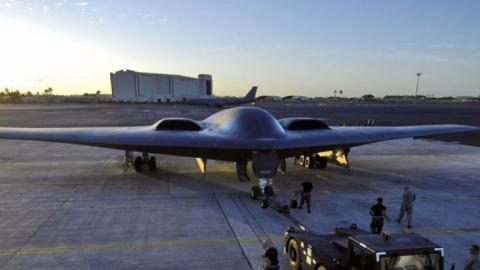Democrats should join Republicans in supporting efforts by the Trump administration to adapt the nuclear deterrent, especially at a time when there is a new focus on the importance of deterring Russia and China.
Although committed to further reducing the number of nuclear weapons in the United States arsenal, President Obama chose during his second term to eschew unilateral nuclear reductions and limitations. Instead, the Obama administration stayed the course with a strategy to modernize the nuclear triad to ensure it is flexible and offers a wide range of response options if deterrence fails. This was wise because to move forward with the global disarmament agenda, considering the nuclear modernization efforts and increasingly provocative efforts of nuclear adversaries such as Russia and China, would have been highly irresponsible of our leaders.
The Trump administration seeks to build on the commitments made by previous Democratic and Republican administrations to maintain and adapt the nuclear triad. Specifically, the Trump administration is pursuing enhancements to the United States nuclear deterrent to add flexibility in response to concerning developments and trends from Russia and China.
During a recent event, Lieutenant General Robert Ashley, director of the Defense Intelligence Agency, said the Russians and the Chinese are both moving down a dangerous path that places great importance and investments in their nuclear arsenals and strategies. He said, “Russia’s stockpile of nonstrategic nuclear weapons, already large and diverse, is being modernized with an eye towards greater accuracy, longer ranges, and lower yields to suit their potential war fighting role.”
He importantly noted, “The United States believes that Russia probably is not adhering to the nuclear testing moratorium in a manner consistent with the zero yield standard. He added, “Our understanding of nuclear weapon development leads us to believe Russia’s testing activities would help it improve its nuclear weapon capabilities. The United States, by contrast, has forgone such benefits by upholding a zero yield standard.”
When I asked if he could expand on that last assertion, he demurred but he explained why American strategists have concluded that Russia has now embraced a strategy of escalate to deescalate. He declared, “Russia assesses the threat of nuclear escalation or actual first use of nuclear weapons would serve to deescalate a conflict on terms favorable toward Russia.” He added, “Russian defense officials have spoken publicly about deescalating a conflict through limited nuclear use. It is a fact that the Russian military has prepared plans and is well trained to transition rapidly to nuclear use in order to compel and to end a conventional conflict.”
It is simple to understand why the Russians would think this makes sense. In the event that Russia employs a low yield nuclear weapon, the United States along with our allies in the North Atlantic Treaty Organization do not currently have a proportional response option ready for prompt delivery that is able to penetrate Russian air defenses. Because of this capability gap, the United States could be inadvertently tempting the Russians to make a miscalculation that could lead to a nightmarish and rapid escalation. The United States take a different approach to change the calculation of the Russians and raise the nuclear threshold since, as best as American strategists can tell, the Russians have now lowered it.
In order to disabuse the Russians of the notion that nuclear employment will garner them some kind of political gain they deem worth the cost, the Trump administration has been seeking to make necessary albeit modest adaptations to the nuclear force. The Trump administration has called for tailoring the force by adapting some warheads to give them much smaller yields and to deliver them from submarine launched ballistic missiles, as well as by bringing back critical sea launched nuclear cruise missiles.
Disappointingly, though unsurprising in this hyperpartisan environment, the adapted low yield warheads that would go on some of the Trident D5 submarine launched ballistic missiles have not earned bipartisan support. The House Strategic Forces Subcommittee usually maintains consensus and saves the controversial moves for the full committee to consider after robust debate, but that is not the approach the Democrats took this year. The subcommittee voted out of key language opposed by Republicans that prohibits the United States from deploying the low yield warhead.
The full House Armed Services Committee will soon consider the defense authorization bill. Democrats have an opportunity to redeem the initiative and join Republicans in supporting this necessary and modest measure to increase credibility of the United States deterrent and raise the nuclear threshold. Indeed, enhancing the position of the United States deterrent, especially when Russia and China are testing American mettle, could not be more important or worthy of some overwhelming bipartisan support.














